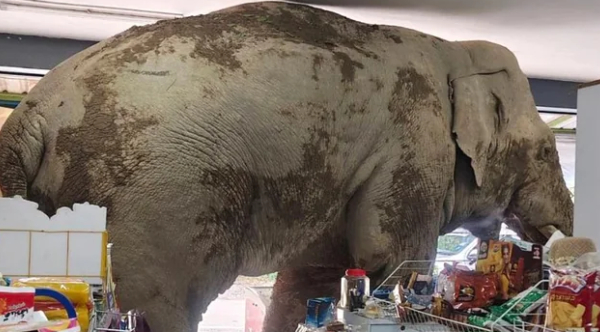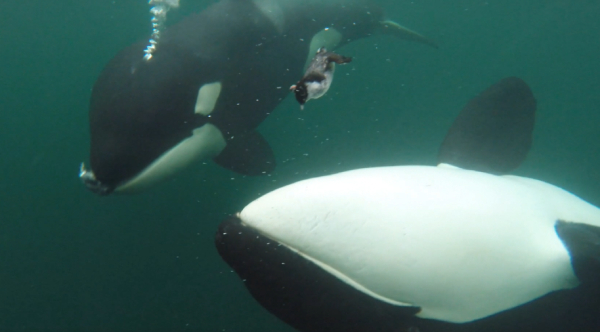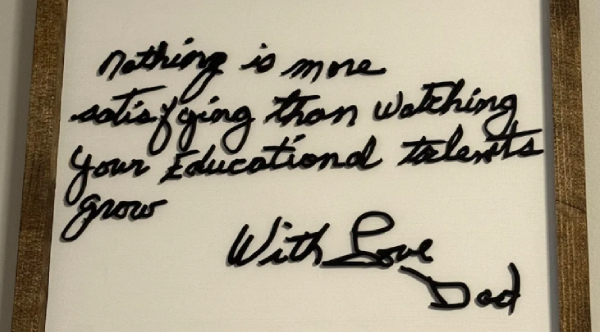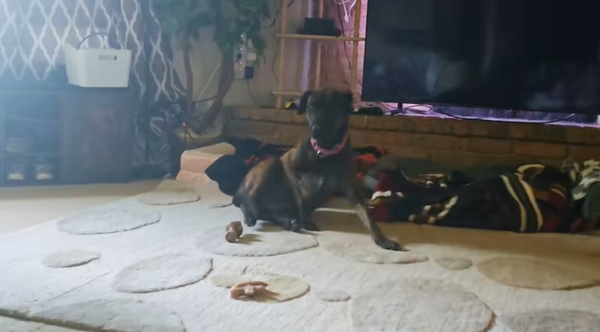Everything We See Right Now, We Actually Saw 15 Seconds Ago
April 6, 2014
Our eyes are continuously bombarded by visual information - millions of colors, shapes and ever-changing motion - yet seeing never feels like work.

Researchers have discovered one reason: Our brains perform automatic visual smoothing over time. A new study has found that our visual perception of things is influenced by what we saw up to 15 seconds ago. This helps create a stable environment, despite sacrificing some accuracy.
It also means that what you see around you - that cup of coffee, the face of your co-worker, your computer screen - may be a time-averaged composite of now and the past.
"What you are seeing at the present moment is not a fresh snapshot of the world but rather an average of what you've seen in the past 10 to 15 seconds," said study author Jason Fischer, a neuroscientist at the Massachusetts Institute of Technology.
He showed subjects an image of a black-and-white grating tilted at a random angle for half a second, then asked them to identify the orientation of the grating they just saw. Then a few seconds later, another grating popped up, and they were to identify its angle.

If the subjects saw the gratings completely accurately, their answers would have no dependence on past gratings, since the orientations were random. Instead, their answers showed a strong influence from the angles they saw previously, even up to 15 seconds earlier.
For instance, if the first grating was tilted to the left and the second was vertical, the subject saw the vertical grating as slanted toward the left. The study was published online March 30 in Nature Neuroscience.
Fischer, who did the work as a doctoral student in the lab of visual scientist David Whitney, calls this filter a continuity field. For a real-world example of the phenomenon, think of a road sign on a rainy day. Despite the motion of hundreds of raindrops - and your retinas being flooded with visual fluctuations - you don't have to struggle too hard to read the sign. Your visual system is averaging over what is effectively noise.

DriversEdGuru.com
"The changes that continuity fields cause us to miss are most often unimportant," Fischer said.
Despite sometimes fooling our eyes, as seen in the study, overall the filter seems to be an advantageous mechanism. Without it, our world would be jittery and overwhelming.
"This is the brain's way of reducing the number of things we have to deal with in the visual environment," said psychologist Aaron Johnson of Concordia University in Montreal, who was not involved in the study. "If we were sensitive to every little change, our brains probably couldn't cope."
Fischer and Whitney also found that the filter seems to come into play only when we need it. Attention matters - past images had an influence if the subjects were paying attention to them, but not if the images or objects were peripheral or in a radically different location. And predictably, the influence of older images lessened the more time passed.
Continuity fields are one type of visual insensitivity, but there are others. Take the failure to notice an obvious change, known as change blindness. One study had an experimenter ask a random pedestrian for directions. Their conversation was then interrupted briefly by a group of men walking between the two speakers and carrying a large, obstructive object. Behind that object, out of sight of the pedestrian, the initial experimenter was replaced by a different person.
Despite the conversation partner being the central object in the scene, only half of pedestrians noticed the change. The rest continued giving directions as if nothing strange had happened.
For the same reason, editing continuity errors in films are difficult to notice. In one scene in "Ocean's Eleven," Brad Pitt first holds a glass full of cocktail shrimp, but after the camera angle changes, he has a plate of food instead. Despite the film likely being seen by the director, editor and producers, the error was not caught before it went to theaters.
"We're not very good at detecting changes in our environment if the object is something we wouldn't expect to change," Johnson said. In the real world, we wouldn't think a person we're talking to would spontaneously transform. Thus, our brains often don't waste energy trying to notice these types of shifts.
Fischer suspects that our brains learn that the world follows certain rules - objects don't change location spontaneously, and little changes don't matter most of the time - and adaptation of the visual system follows suit.
Visual scientist Michele Rucci of Boston University, who was not involved in the study, was surprised and intrigued by the existence of continuity fields.
"We have this input to our retina that is continuously jumping, but yet the world seems stable," Rucci said. He noted that, even when we fix our gaze on something, our eyes are actually shifting microscopically several times per second. "Our perception of the world is very different than what the real input to the retina is."
Click Here For The Most Popular On Sunny Skyz
 Couple Rescues Prairie Dog From Their Dog's Mouth, Then Decides To Adopt It
Couple Rescues Prairie Dog From Their Dog's Mouth, Then Decides To Adopt It
 These Are The Movie Scenes People Say Are Absolutely Flawless
These Are The Movie Scenes People Say Are Absolutely Flawless
 Hungry Elephant Casually Walks Into Grocery Store For Snacks In Thailand
Hungry Elephant Casually Walks Into Grocery Store For Snacks In Thailand
 Wild Orcas Keep Giving Humans Gifts, Leaving Experts Puzzled
Wild Orcas Keep Giving Humans Gifts, Leaving Experts Puzzled
 My Girlfriend Gifted Me My FatherŌĆÖs Handwriting To Keep Forever
My Girlfriend Gifted Me My FatherŌĆÖs Handwriting To Keep Forever
 We CanŌĆÖt Stop Looking At These Adorable Baby Loon Photos Taken On A Lake
We CanŌĆÖt Stop Looking At These Adorable Baby Loon Photos Taken On A Lake
 The Funniest Dog Reactions To Hearing 'Walk' ŌĆö YouŌĆÖll Be Laughing Out Loud
The Funniest Dog Reactions To Hearing 'Walk' ŌĆö YouŌĆÖll Be Laughing Out Loud
 Hero Dog Named RAMBO Scares Off Masked Robbers To Save Woman
Hero Dog Named RAMBO Scares Off Masked Robbers To Save Woman
 'Am I Allowed To Be This Happy?' The Moment A Nervous Foster Dog Finally Lies In A Dog Bed
'Am I Allowed To Be This Happy?' The Moment A Nervous Foster Dog Finally Lies In A Dog Bed
 Grandma Thinks She's 60. Her Reaction To Learning She's 90 Is Priceless
Grandma Thinks She's 60. Her Reaction To Learning She's 90 Is Priceless
 Autistic Son Says 'Bye Daddy' And Leaves Mom And Dad In Tears
Autistic Son Says 'Bye Daddy' And Leaves Mom And Dad In Tears
